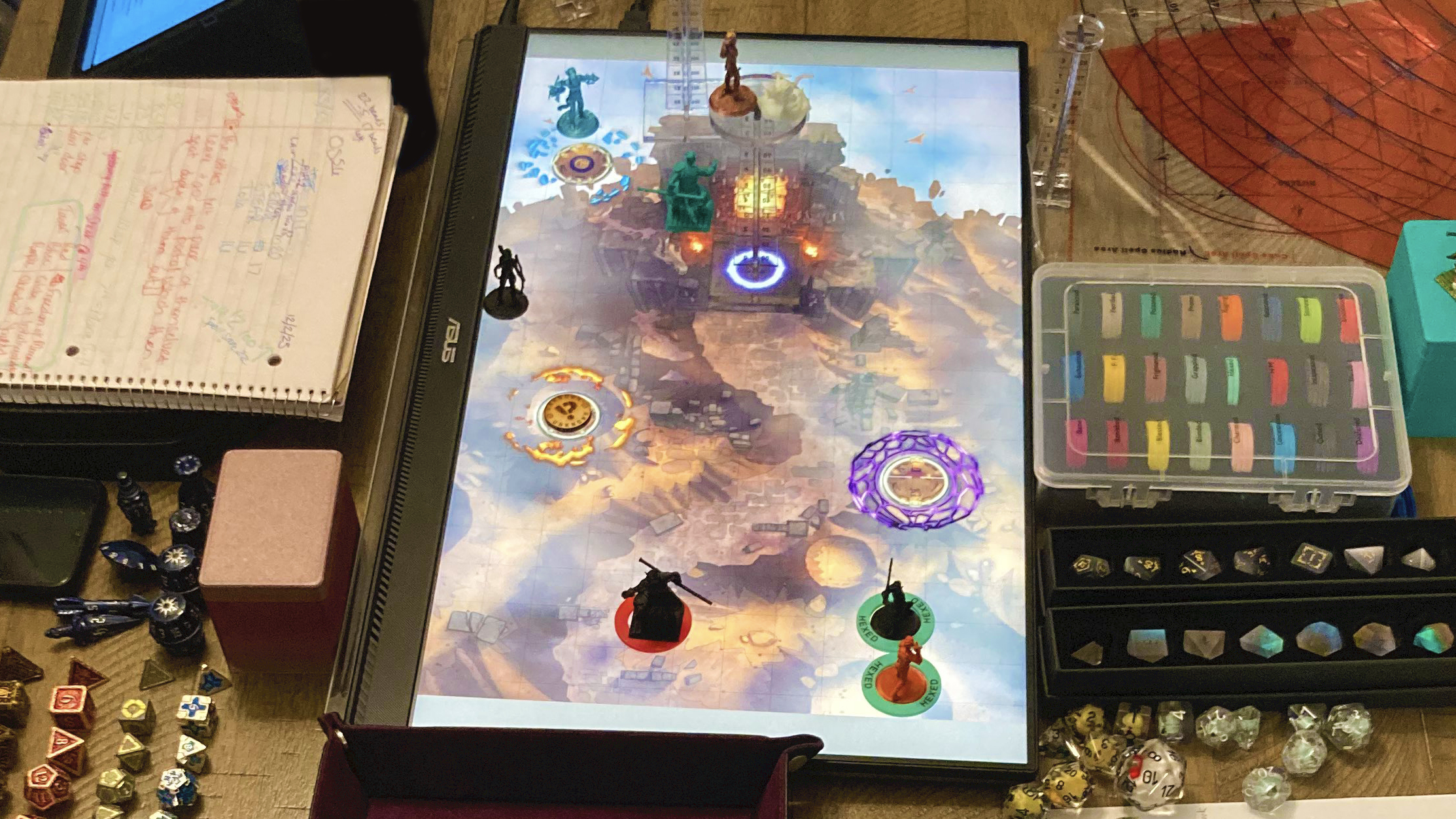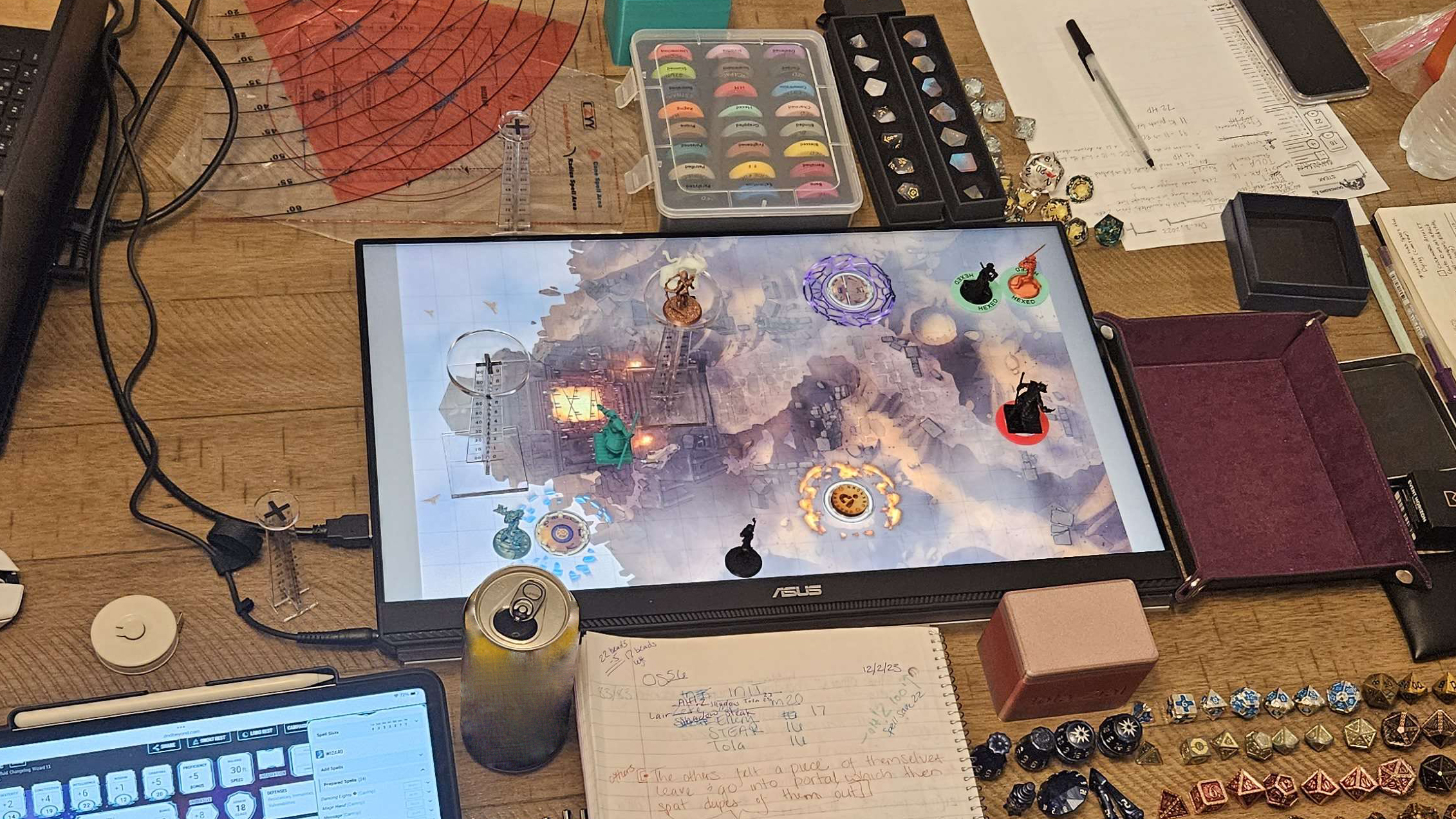
The Asus ZenScreen MB249C portable monitor saved my dragon-hide when I was planning my first in-person Dungeons & Dragons session with an online group that had been meeting for roughly 5 years now.
This was the end of a player character’s arc — where a deadly boss battle would take place. I’ve never done anything like this before in person, so it was incredibly nerve-wracking. That’s not to mention the technical hurdles I had to overcome in order to get everything to function as intended.
It’s not as simple as plugging a portable monitor into your laptop and throwing the map on screen — well, I suppose it can be depending on how you use it, but that was not the case for me.
This is my journey using Asus’ largest portable monitor to play D&D with my friends.
Asus ZenScreen MB249C = epic D&D battle map
Of course, I could have just thrown an image on the display, but that wouldn’t be very helpful considering D&D can be very crunchy in terms of measurements. I use Foundry VTT as my go-to virtual tabletop software, so I had to figure out how to align an accurate grid and full-screen it on the monitor without any extra HUD bits.

With Foundry VTT, I had the software opened on the laptop and a player viewpoint via browser on the monitor. With the helpful add-on called Hide Player UI (you can download this in the add-on module section of Foundry), I could full-screen the browser without any bits covering the map.
Now I have the map, what next? Well, I had to measure the monitor-to-mini ratio in order to accurately determine how large to make the grid. This was relatively easy. I used a spell-casting ruler I purchased online to determine the exact size of one square on the monitor. Unfortunately, not all rulers are equal (well, kind of) — I bought two rulers, both of which had the correct ratios, but either doubled or halved the amount of feet it displayed. I recommend the ruler included in this cool status effect pack, as it was the most accurate.
After accurately creating the grid for 30mm minis, I realized how tiny the monitor was for a game like this — especially with the map I was using (Wizard Prison Pt. 1 — thanks, Czupeku), as image ratio is incredibly important. The map was 95 feet long in-game. If you’re unfamiliar with D&D — that’s not very far. To resolve this, I doubled the movement per square, so instead of each square being 5-feet, they were 10-feet. At 190 feet, the battlefield was still relatively small, but not so small that it destroyed my sinister plans.
Another big utility I used to circumvent the smallish map was verticality. I purchased two sets of these combat risers, which were excellent for holding minis and keeping my big bad aloft as he cast wicked spells on my players.

Now I had to figure out a simple music-delivery system — oh wait, the Asus ZenScreen MB249C has a set of speakers. I downloaded Spotify on the connecting laptop and my problem was solved. (The volume on the portable monitor is set to 50 out of the box, so adjust that through the settings on the monitor itself.)
At this point, everything was set up and ready to go, but it didn’t feel… enough? I could have just gone to Staples and had the map printed out. That would have saved me all this trouble. So what could I do to really make this pay off? Oh boy, I had an idea.
I downloaded another add-on to Foundry called Automated Animations — this gave me a whole library of animated effects to slap on my map. I created magical bubbles for every side-objective and threw a magical runic effect on the ritual that the big bad was casting. It looked much more lively. But… I felt like I could do more. That’s when Czupeku released Wizard Prison Pt. 2.
Not only did I have the original map set up and ready to go, but I expanded the boss fight to occur through two different maps, flipping between them when the players went in and out of the aforementioned prison (easily done through Foundry). This added yet another side-objective for the players — and I threw in a couple more animated effects in between to really bring it to life.
I did it. Everything was set and ready to go. So what happened when it happened?
The end of an arc was the beginning of another
I got all five of my players together, one of which had to literally fly out here despite living one state over (horrifying reminder that states in the US are bigger than some countries around the world). We played D&D for over 8 hours straight. Nope, that is not an exaggeration, and that’s not super out of the ordinary for critical sessions. More ironic because only 30 seconds passed in-game — that’s how D&D works, baby.
It was a massive success, and the only technological threat I had to overcome was ensuring that players didn’t throw their dice at the $350 Asus ZenScreen MB249C. The monitor is an excellent investment for people that play TTRPGs in-person more often, especially if you haven’t already set up a fancy TV-in-the-table thing.
I hope to see Asus level up its monitor game even further — maybe with a 27-incher. Doing the math on that, it’ll add roughly 10 more feet to the map (or 20 feet if I double it again). The more feet I get, the more hurdles I can throw at my players.
I’ll definitely be using the Asus ZenScreen MB249C for every in-person session going forward.







